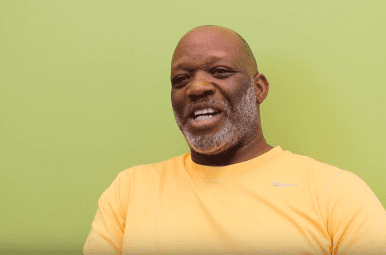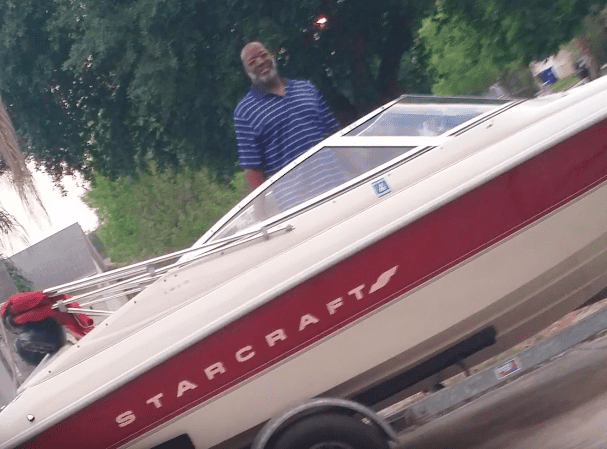How Did a Man Get His Life Back Thanks to Minimally Invasive Spine Surgery?
- How is the Proper Diagnosis the Key to Treatment Success?
- What is Minimally Invasive Spine Surgery?
- What is Recovery Like After Minimally Invasive Spine Surgery?
The chronic pain in Anthony’s lower back and right leg got so bad just sitting down was a harrowing experience, as he feared his spine might give out at any time. His spine troubles forced him to give up activities he loved to do such as riding his motorcycle and cruising the lakes in his boat.
When all other conservative measures failed, Anthony turned to Ravi R. Patel, M.D., a board certified orthopaedic surgeon specializing in minimally invasive surgery of the spine at Orlando Orthopaedic Center, to help him find a way out of pain.
“The benefit of going to see Dr. Patel is now I’m able to walk,” says Anthony. “I can stand. I can do most things I could do before. I can sit down like I used to without worrying if my spine is going to crush or if I’m going to cry out in pain.
How is the Proper Diagnosis the Key to Treatment Success?

“Surgery was my absolute last option,” says Anthony. “I tried everything: chiropractors, acupuncture, hanging upside down like a bat, and you name it. Nothing worked. Other surgeons said to me, ‘there’s nothing we could do other than put a plate in you.’ But when I saw Dr. Patel, he said ‘there’s no way I can let you go on like this.’”
Dr. Patel remembers his interaction with Anthony fondly. “I had the pleasure of taking care of Anthony,” says Dr. Patel. “This was a young man who had suffered from severe pain that began in his low back and spread along his right leg. He had tried all forms of treatment, activity modification, medications, physical therapy, chiropractic care, and unfortunately, those weren’t giving him the relief that he was looking for.”
Persistent low back pain impacts roughly 80% of adults, and lower back pain is the leading cause of disability on the job and work days lost.
Through detailed and extensive analysis of Anthony’s imaging tests, Dr. Patel was able to detect the source of the problem that had eluded other physicians. “We looked over his MRI, and we were able to detect a small disc bulge, as well as a small fluid sac that was pressing on the nerve,” says Dr. Patel. “Anthony suffered from a pinched nerve at the L4, L5 level. What happened is that he had developed arthritis in his back that caused the discs to bulge, and bone spurs and fluid sacs to grow within the joint.”
“When Dr. Patel took a look at my MRIs, he said ‘I think I see what’s going on here. I think we can fix this,’” says Anthony. “He had me get a second MRI to confirm what he was seeing, which nobody else had seen. Now, I can reach over and grab this, or reach over and grab that. Everything is wonderful.”
What is Minimally Invasive Spine Surgery?
Technological advances have transformed how spine surgery is now performed. Using state-of-the-art surgical instruments, spine surgeons can now operate using minimally invasive incisions which spare trauma to the soft tissue around the spine, promote improved outcomes, shorter hospital stays, and faster recovery times. As a result, patients experience less scarring and decreased discomfort after surgery.

For Anthony, his decision to undergo surgery as a last resort paid off in spades. “Dr. Patel scheduled me as soon as he possibly could,” he says. “And I am 100% sure he saved my life. There is no greatness living life in excruciating pain. I had surgery with Dr. Patel because it had gotten to the point where I lost my mobility, and I was in constant pain. I couldn’t ride my motorcycle anymore. Forget about taking the boat out.”
What is Recovery Like After Minimally Invasive Spine Surgery?
Many patients show considerable improvement from their symptoms post-surgery and can get back to their daily routine in a matter of weeks. Physical therapy is often recommended under the guidance of a certified physical therapist to complete one’s recovery in the safest and shortest amount of time possible.
“After surgery, Anthony had immediate improvement from his symptoms,” says Dr. Patel. “When he awoke from the anesthesia, his pain was completely gone. Anthony came back to see me two weeks later, and it was hard to recognize him, considering what he was like before. He was able to do all of the things that he loved, and he had recovered almost completely in such a short period. I was very honored to be able to give Anthony his life back through this minimally invasive option.”
Anthony is eternally grateful for the role Dr. Patel and the entire team at Orlando Orthopaedic Center played in allowing him to live life to the fullest again. “After seeing Dr. Patel, I can’t tell you how grateful, how appreciative I am of him and his staff,” says Anthony. “They are the most cheerful people, and I wish I could tell people if you are in pain, please go see Dr. Patel. He can see between the lines. He saw what no one else could see, and as a result of that, he saved my life.”


